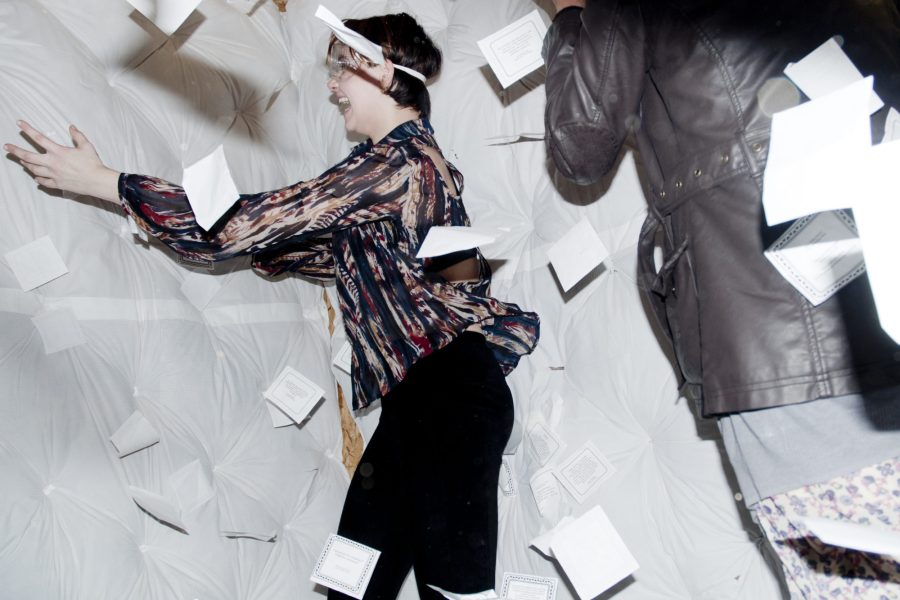Marcus Coates has spent the morning in a wooden soundproof box. It is where he holds his life classes, individual hour-long sessions for members of the public where he tries to find solutions to people’s problems through his role as an artist. With all sessions fully booked, and participants describing his approach as ‘life changing’, Coates is guardedly pleased with the response. “We have been asking for a £10 donation afterwards and I think everyone has been happy to pay.” He says the issues people bring him vary, although many are about a crisis in creativity. “Artists not knowing whether to carry on or get a proper job, or if what they are doing is meaningful.” Coates, in his Shaman form, listens to their issues and tries to help, either by recounting similar experiences or taking them on a spiritual journey. “The story I tell them is then theirs to take away and do what they like with.”
In the context of NOW I GOTTA REASON, Coates project is a curious one. Whereas many of the other artists in the exhibition have sought to energise the collective spirit of the enterprise, Coates’ work is intensely private, and more like a confessional. Perhaps this is not surprising in the context of Coates’ larger practice, where he uses himself as the catalyst for change, be it in Israel, trying to solve the Israel/Palestine conflict or helping the residents of a housing estate in Elephant and Castle. Yet he acknowledges that this project has been different. Partly this has been down to what was possible in the four-week time frame. “It has been normal, in the past, for me to work with a community and to perform consultations with groups of clients who have a collective problem. This usually necessitates a longer-term involvement. It was four years when I worked in Elephant and Castle. But I will be running a session for eight or so artists who ‘don’t have a reason’ this Tuesday evening and this is more of a group session with shared responsibility for seeking resolutions.”
Through both his private and public audiences Coates is performing a heroic act. He is challenging us to measure his worth as an artist, in time, money and usefulness. “How do you put a price on what I do?” he says, “it’s not as if there is a guide.” Putting into doubt the very fabric of the art world’s value system such as it is, is a brave, and vulnerable position to be in. The question is whether other artists will thank him for it.
